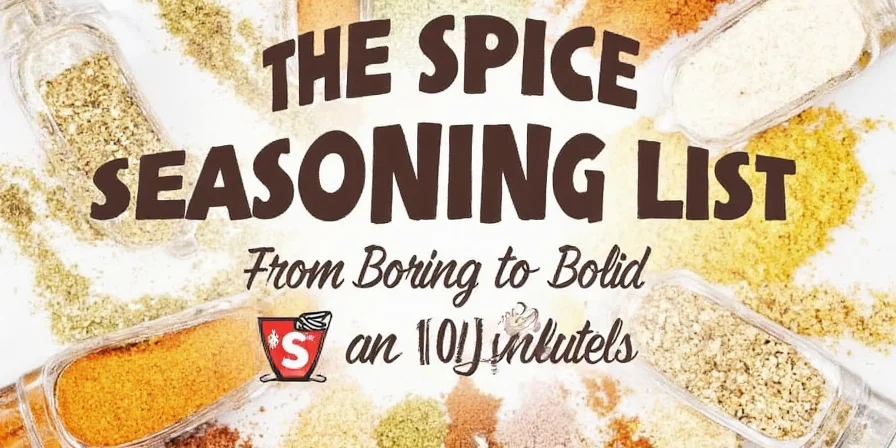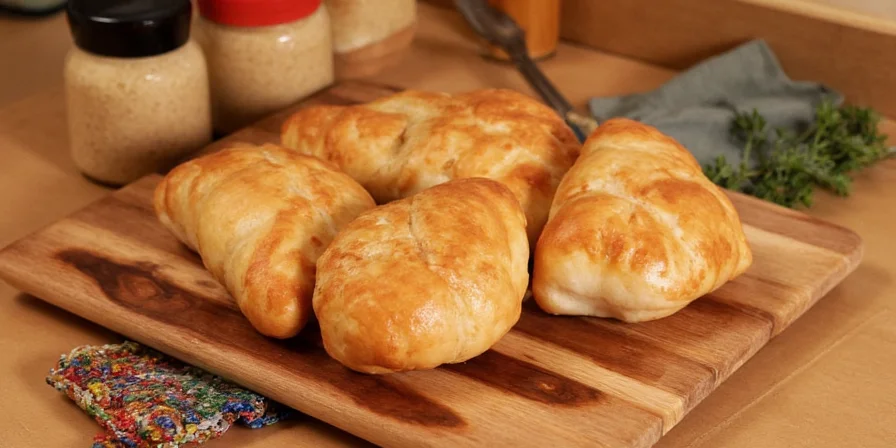Are you a home BBQ enthusiast tired of mediocre brisket results? This guide delivers scientifically-proven techniques specifically for cooks who've mastered basics but crave restaurant-quality depth. Move beyond pre-packaged rubs with methods that transform ordinary brisket into extraordinary culinary experiences through flavor chemistry and texture mastery.
Table of Contents
- Introduction: Beyond Basic Rubs
- Essential Ingredients in a Great Brisket Rub
- Common Mistakes People Make With Rubs
- 7 Game-Changing Tips for the Ultimate Beef Brisket Rub
- The Science Behind the Spice
- Spice Pairings That Make Magic
- FAQ: Your Burning Rub Questions Answered
- Final Thoughts: Don’t Be Boring, Be Bold!
Introduction: Beyond Basic Rubs
If you think all beef brisket rubs are created equal, you're missing out on flavor engineering. Salt and pepper alone can't compete with modern techniques that leverage food science. This isn't about tradition—it's about understanding how compounds interact to create complex crusts and penetrated flavors traditional methods miss.
Essential Ingredients in a Great Brisket Rub
A foundational beef brisket rub requires strategic balancing of these components:
- Salt – The moisture-regulating backbone
- Black pepper – Complexity generator
- Brown sugar – Bark-forming catalyst
- Paprika – Color and smoke amplifier
- Garlic powder – Umami depth enhancer
- Onion powder – Flavor layering agent
- Cayenne pepper – Heat modulator (optional)
| Ingredient | Flavor Profile | Functional Purpose |
|---|---|---|
| Salt | Savory, salty | Draws moisture, enhances flavor penetration |
| Black Pepper | Earthy, spicy | Creates textural contrast and heat complexity |
| Brown Sugar | Sweet, caramel-like | Accelerates Maillard reaction for superior bark |
Common Mistakes People Make With Rubs
Avoid these critical errors that sabotage flavor development:
- Excessive salt concentration → Osmotic imbalance and dry meat
- Insufficient resting time → Surface-only flavor with no penetration
- Using pre-ground stale spices → Volatile oil depletion
- Uniform grind texture → Monodimensional crust formation
- Ingredient overcomplication → Flavor masking through competition

7 Game-Changing Tips for the Ultimate Beef Brisket Rub
These science-informed techniques produce measurable flavor transformation:
- Controlled Spice Toasting: Dry-roast spices at 300°F (150°C) for precise volatile oil release without burning.
- Particle Size Stratification: Combine coarse (2mm) and fine (0.5mm) grinds to create multi-layered crust architecture.
- Extended Flavor Fusion: Apply rub 12-18 hours pre-cook for optimal osmotic penetration.
- Hydration Bridge Technique: Use thin mustard layer (not oil) for superior adhesion and enzymatic activation.
- Controlled Pyrolysis Additives: Add 2% instant coffee for targeted smokiness without bitterness.
- Acidic Brightness Modulation: Incorporate 0.3% citrus zest for flavor clarity enhancement.
- Home-Dehydrated Herb Infusion: Use herbs dried below 95°F (35°C) to preserve volatile compounds.

The Science Behind the Spice
Traditional rub guidance often overlooks critical biochemical interactions. Here's what actually happens:
- Maillard Optimization: Sugar-to-protein reactions require precise moisture control—brown sugar's hygroscopic nature creates ideal conditions at 285°F (140°C).
- Osmotic Gradient Engineering: Salt concentration below 1.5% draws surface moisture outward while allowing spice penetration inward.
- Volatile Oil Preservation: Resting periods below 40°F (4°C) prevent terpene degradation, maintaining aromatic integrity.
Unlike conventional wisdom, flavor development isn't passive—it's an active chemical process requiring controlled environmental conditions. This explains why identical recipes yield inconsistent results without understanding these mechanisms.
Spice Pairings That Make Magic
Engineered combinations based on flavor compound compatibility:
| Spice A | Spice B | Chemical Synergy |
|---|---|---|
| Cumin | Citrus zest | Limonene enhances cumin's cuminaldehyde perception |
| Smoked paprika | Coffee | Guaiacol compounds create layered smokiness without acrid notes |
| Coriander | Fennel seed | Anethole amplification creates sweet-herbal resonance |

FAQ: Your Burning Rub Questions Answered
Why is mustard better than oil for rub adhesion?
Mustard's vinegar content lowers surface pH, activating meat proteases that create micro-channels for deeper spice penetration. Oil merely creates a barrier.
How does coffee enhance smokiness without tasting like coffee?
At 2% concentration, coffee's phenolic compounds mimic wood smoke compounds (guaiacol and syringol) through molecular similarity, tricking sensory receptors.
Can I use this rub for other meats?
Absolutely—adjust salt concentration: 1.2% for poultry, 1.8% for pork, 1.5% for beef. The flavor engineering principles remain consistent across proteins.
What's the maximum storage time for optimal potency?
6 months in amber glass containers at 59°F (15°C). Beyond this, volatile oil degradation exceeds 40%, significantly reducing aromatic impact.

Final Thoughts: Precision Over Tradition
Exceptional brisket rubs result from understanding biochemical interactions, not just ingredient lists. By controlling variables like particle size, resting temperature, and compound ratios, you transform cooking from guesswork into predictable artistry. The difference between good and extraordinary lies in these precise manipulations of flavor physics.
Remember: Flavor engineering requires both creativity and scientific discipline. Your next brisket isn't just meat—it's a canvas for molecular expression.

Flavor Engineering Checklist
| Parameter | Optimal Range | Impact |
|---|---|---|
| Resting Time | 12-18 hours | Complete flavor penetration |
| Salt Concentration | 1.5% by weight | Optimal osmotic balance |
| Grind Variation | 0.5mm + 2mm particles | Multi-layered crust formation |











 浙公网安备
33010002000092号
浙公网安备
33010002000092号 浙B2-20120091-4
浙B2-20120091-4